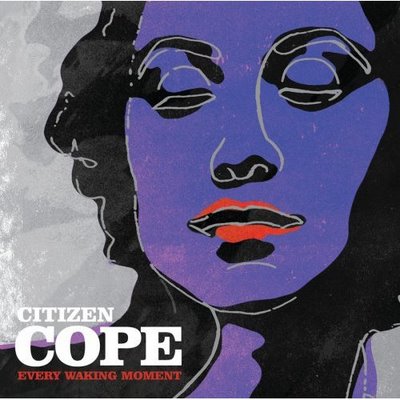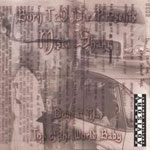A FOUNDATIONAL CanineMind ExclusiveIn his
Art of the Novel, Milan
Kundera offers a grim picture of the contemporary cultural field: where once the writer could be seen as an isolated scribe amid an otherwise wordless, or perhaps even illiterate, population, he now must assume his place as merely one of an endlessly multiplying legion of writers. Everyone has something to say; everyone has a book to write. Libraries upon libraries are being filled with reams upon reams of papers, all testimony to the subjective (over-)self-importance of the contemporary mind. In short, the world of cultural production is now an asylum, and the “graphomaniacs” are in charge.
Kundera’s language of pathologies and productive overloads is partially a response to what he perceives as a very real threat to the continued feasibility of novel-writing. If it is the case that the novel has devolved into a vehicle for narcissistic, bordering on solipsistic, subjectivism, Kundera holds, it will lose its primary and original purpose: the asking of questions, the humbling of one’s knowing self to the potentially unsolvable mysteries of existence. Insofar as Kundera is concerned with the future of the production of the novel, he is also concerned with the future of the criticism of the novel. The critic, for Kundera, is the protector of the cultural field and the guide for the reading public: it is he who sifts through the works that are produced, in search of the best, and only the best, for his readers. The graphomaniacal proliferation of the written word makes his task significantly more complicated. With such a great volume of works being produced, who could ever hope to salvage the best? Even more, how can the critic, operating in a cultural field where he can never hope to have read/heard/seen/witnessed everything, hope to give an authoritative assessment? Above the gates of Kundera’s graphomaniac Bedlam hangs a simple warning to future critics: Abandon hope, all ye who enter here.
As evocative as Kundera’s reflections are at first blush, they only capture half the current state of the cultural field – the production side. While he is right to see the critic’s role as being complicated by expanding literary output, Kundera could not anticipate, in 1991, a second challenge arising – this time, from the reception side, spurred by the coupling of critical forums with web-based platforms. Just as new cultural objects appear to be multiplying out of control, critical responses to those products are emerging with equal, if not greater, rapidity. Far from being the last word on the subject, the critic is now frequently only the first.
At the risk of engaging in revisionist history, let me suggest an old model for the critic, one which seems to lie behind Kundera’s own notion of the critic: the stately, detached man of letters. When I describe him as “detached,” I’m not referring to his attitude or character – it was just as possible, nay, just as likely, to find a politically, economically, or socially motivated critic “then” as it is “now.” Disengagement, thus, is not an element of ideology, style, or orientation, but rather, a fact of position within the cultural field. The newspaperman, or the editor of the literary journal, stood at a remove from the readership. His words were passed on to the reading public in a neatly defined format that suggested an air of definitiveness to his opinion. An editorial was formulated, a review was written, and then inserted into the paper with a bold heading, a by-line, and maybe even a special box on the same page of the paper, week after week. The editorial apparatus surrounding the critic symbolized the finality of his opinions – after he had surveyed the cultural field, his judgments were passed on, set in type-written, self-contained pages, if not in stone.
This editorial apparatus survives to this day. And, as a consequence, perhaps the true division to be drawn is not between “old media” of times past and the “new media” of today. A better framework is the division between “slow media” and “fast media.” In slow media, such as monographs, magazines, and even daily newspapers, the acts of writing, publishing, and response are distantiated – once an item is written, it must be entered into an editorial and publication apparatus that can take hours, days, months, or even years to produce a publicly available piece of writing. Nevertheless, it is not this gap that truly marks slow media. By all accounts, the turnaround of material for a daily newspaper is very fast; meanwhile, even pieces published on “fast media” platforms (the web) can take extended periods of time to be written, edited, and published.
In other words, slow media are identified not by the speed of production (in all its phases), but the speed of publicly available response associated with their output. Readers, when confronted with an opinion delivered through slow media, can, and frequently do, take issue. Short of establishing their own parallel, competing media organs, readers must resort to letter-writing, or, with growing frequency, e-mail. In response to the critic’s opinion, the reader writes a letter or message, which is then sent to the slow media publisher (or sometimes the writer himself), where it usually sits in a pile with similar letters. Perhaps, if space allowed, one of these letters is selected to be run in the paper, generally a few days, but sometimes a few weeks, later, in much smaller type, in a less prestigious part of the paper, with all the other commentary from “outsiders.” Even if e-mail speeds up the delivery of the reader’s response, it cannot single-handedly overcome the distantiation between the initial formulation of a reaction and the publication of that reaction – in keeping with the practice of slow media, responses are only slowly and selectively made available to a larger reading public.
All of the above conditions contributed to the seemingly “self-evident” or “unchallengeable” nature of the critic’s opinion. Under these terms, it was difficult to question a published opinion in a quickly, publicly accessible way: the writer wrote infrequently, he could be responded to in “slow” forms of writing. Once received, these letters were subject to an elaborate process of institutional filtering, even when (if) ultimately printed: responses are selectively read, less frequently put into print, and printed both at a point when most readers have forgotten the relevant issue and in a format less prominent than the initial piece. Make no mistake about it, the letters to the editor section found in virtually every newspaper segregates and hierarchalizes as much as it democratizes: an outsider’s letter might work its way in, but once in, it will be identifiable as such, smaller font, word limit and all.
If the newspaper represents the archetypal “slow media,” the on-line news magazine and discussion-based web forums represent the cutting-edge of the “fast media.” From a production standpoint, articles can be uploaded to audiences of hundreds of thousands in seconds – almost infinitely faster than the process of bringing an issue to press. For the writer who desires to see his name in print, the internet offers almost instantaneous gratification.
As noted previously, however, the true division between slow and fast media is not on the production side – not only do newspapers offer a relatively quick turnaround for writers desiring to see their name in print, but also quality web content still requires time for thought, drafting, and editing. The real change from slow media, as such, is found on the reception side.
E-forms -- like blogs, message boards, etc. -- contribute to a leveling the opinion sphere. Through web forums, comment boxes, and other feedback mechanisms, a reader can formulate and publish responses within minutes. More importantly, these responses can frequently be posted alongside or beneath the original article, pairing them visually in the reader’s field of view. It has become common practice on news websites to include readers’ polls and open responses alongside articles by paid professional journalists – after reading what the critics think, the reader is asked to articulate his opinion, an opinion which can then be published alongside the initial article. In web forums, meanwhile, integrated discussions can be structured around a review lifted from another site; in other cases, responses can be posted beneath the article on its original platform. Visual hierarchies still undoubtedly exist – readers of threads must almost inevitably read the initial article as the thread lead, before selectively scanning the response title lines. Nevertheless, the web forum format those original critique and responses together into a single, integrated thread.
As the above discussion suggests, the development of electronic response forums has dramatically reduced the effort required to formulate responses and increased the access to a reading public for the unaffiliated writer. These quantitative changes have produced a qualitative change in the critical process. According to the Kunderan model of criticism, the sheer volume of cultural product churned out on a yearly basis complicates, if not wholly undermines, attempts by individual audience members to identify quality pieces of culture. The community of critics, in turn, helps reduce the effort of the audience by collectively sifting through cultural materials, extracting the best items and directing audiences toward them. In this sense, critics are devoted to cutting down on paper, cutting down on words, cutting down on noise, and cutting down on visual confusion: like wheat being separated from chaff, the mass of cultural material is filtered down into a set of short articles.
As far as critics who operate in the web environment are concerned, the day of the Kunderan reviewer is dead. The advent of fast media, while adding new approaches to criticism on the production side, has also liberated the reception side of the critical practice. In a bizarre e-inversion, one review can spawn eighty-five responses, each of which can not only voice entirely idiosyncratic, non-overlapping opinions, but launch into a mind-boggling circle while criticism is passed not only the original review or the item being reviewed, but other reviews, potentially endlessly. As a result, we now have overload on both ends: the production side and the reception side.
In a testament to the charybdic potential of web-based “fast media,” the critic’s plight can no longer be localized to web critics. As the practice of publishing all critical material in both print and web forms, even opinions turned out by slow media critics can be pulled into the critical, meta-critical, and meta-meta-critical whirlpool of web forums. In short, any opinion conveyed through the printed word is now up for constant, seemingly endless debate.
Of course, with the expansion of critiques of criticism comes a new opportunity for the critic: if he so chooses, he can enter the evolving discussion, clarifying, expanding, qualifying, or retracting as necessary. In doing so, the critic must deal with several implications for his practice. The first is theoretical, and deals perhaps more with the critic's ego: does his identity as a critic require him to maintain his distance from his audience? Wouldn’t he be compromising the authority of his opinion by allowing himself to remanufacture it in real-time on the web? The second is ethical: can he defend his own writing anonymously, just as many critique his work anonymously? How much clarification post hoc becomes abusive or deceptive? Wherever one comes down on these issues, if one comes down into the critical forum at all, a basic fact must be acknowledged: The critic’s opinion is no longer unassailable(if it ever were) and the reader’s response is no longer hidden and inaccessible to the greater community of readers.
Such developments, however, don’t spell the end of criticism, but merely suggest a necessary reorientation of the critic’s self-conception. Without the protective institutional apparatus of detachment to rely upon, the critic can no longer hope to offer the definitive, LAST word. The goal of the critic in the age of internet journalism? To have a particularly strong, provocative FIRST word, to set the terms for a lively, informed debate. The e-critic is the structurer of conversation, and insofar as the remainder of the journalism world can be pulled into that forum, so moves the enterprise of writing: structuring a conversation for a virtually connected community of readers.









































